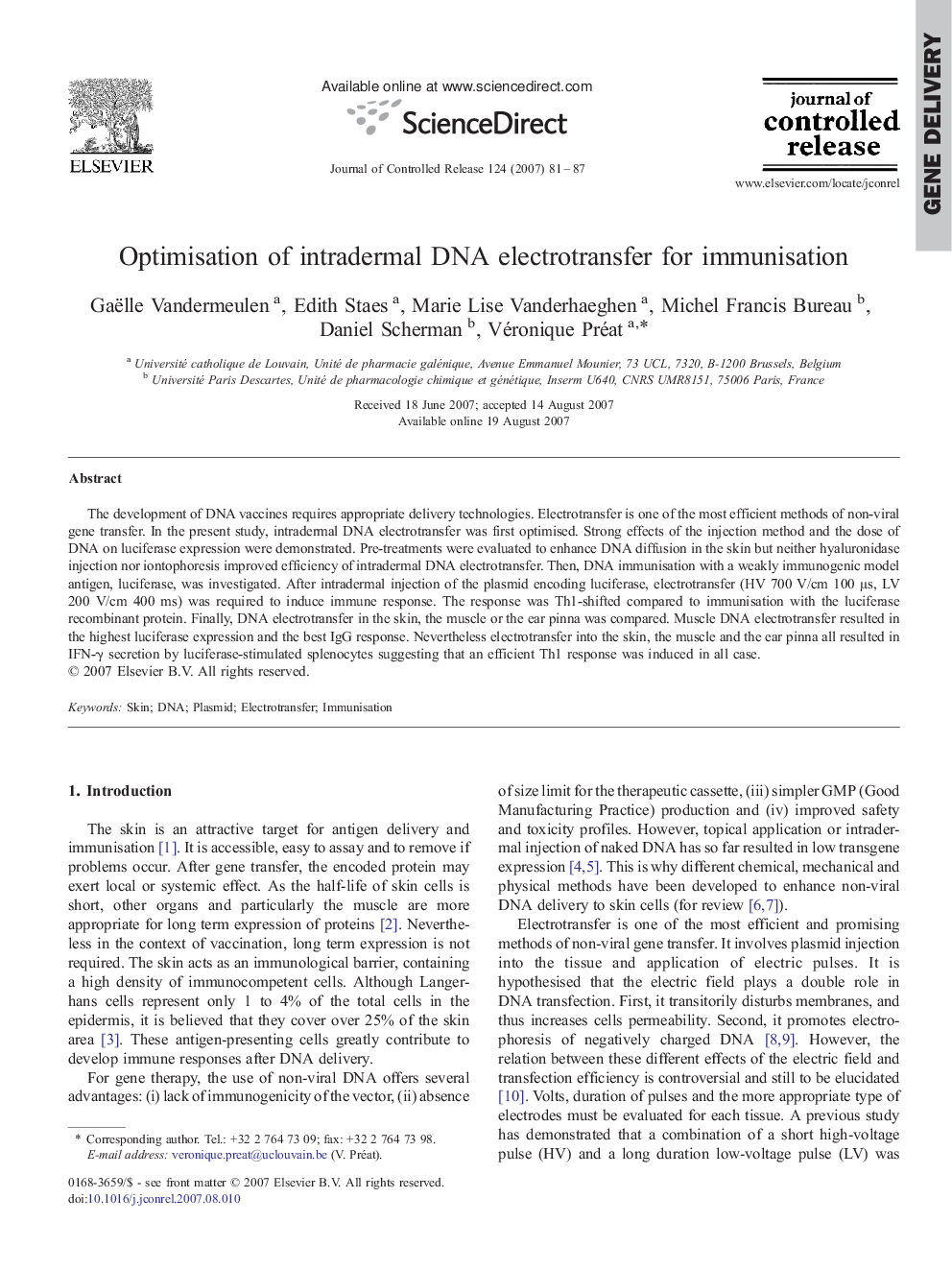| Article ID | Journal | Published Year | Pages | File Type |
|---|---|---|---|---|
| 1427165 | Journal of Controlled Release | 2007 | 7 Pages |
The development of DNA vaccines requires appropriate delivery technologies. Electrotransfer is one of the most efficient methods of non-viral gene transfer. In the present study, intradermal DNA electrotransfer was first optimised. Strong effects of the injection method and the dose of DNA on luciferase expression were demonstrated. Pre-treatments were evaluated to enhance DNA diffusion in the skin but neither hyaluronidase injection nor iontophoresis improved efficiency of intradermal DNA electrotransfer. Then, DNA immunisation with a weakly immunogenic model antigen, luciferase, was investigated. After intradermal injection of the plasmid encoding luciferase, electrotransfer (HV 700 V/cm 100 μs, LV 200 V/cm 400 ms) was required to induce immune response. The response was Th1-shifted compared to immunisation with the luciferase recombinant protein. Finally, DNA electrotransfer in the skin, the muscle or the ear pinna was compared. Muscle DNA electrotransfer resulted in the highest luciferase expression and the best IgG response. Nevertheless electrotransfer into the skin, the muscle and the ear pinna all resulted in IFN-γ secretion by luciferase-stimulated splenocytes suggesting that an efficient Th1 response was induced in all case.
